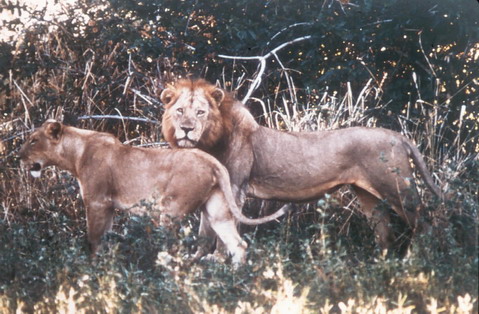You know how after you have been somewhere for a while, it begins to feel comfortable and you begin to feel like you can become part of it’s day-to-day fabric? After nearly 2 weeks in Zambia, it’s beginning to feel like that. It certainly helps that Zambia is a beautiful country with very generous and friendly citizens.
My IBD team and I have been lucky to have had the chance to start our experience with an amazing half-week of safaris in the South Luangwa National Park using the services of a bushcamp called Flatdogs. The bushcamp staff was very, very friendly, professional and seemed to love their jobs at the bushcamp.
I think I might love my job if I got to wake up every day wondering whether there were any hippos, elephants or lions roaming the grounds of the bushcamp the night before (or even during the day, which happened while we were there). I can see myself getting used to that very quickly. After a couple of days there, I started to feel like it was my home in Zambia and I didn’t want to leave.
But back to the safaris: there are very few more pristine experiences I can imagine than going into a national park like this one. There is very little evidence of human presence there. In fact, human presence is mostly only found in 4-hour blocks of time: once in the morning and once in the evening when (walking or driving) safaris take place in the park.
Outside of those hours, visitors are kindly welcomed outside the park. In the park, there are no bathrooms, no garbage cans, no convenience stands, nothing for human comfort. All this takes some adjusting to if you come from a western country but as a result, the wildlife in the park is nearly undisturbed.
Luckily for us, the animals in the park do not have a strong memory of being poached, which means safari vehicles can get pretty close to them and they won’t hide back in the thick bush. In Zambia’s recent history, widespread illegal poaching has devastated wildlife populations in many areas.
But Zambia has done a fantastic job of making wildlife conservation a top priority and now enjoys a steady recovery from illegal hunting and poaching activities. I’m not sure when again I will get to see an elephant and its baby eating the trees from 30 feet away, or a lion laying unconcerned of our presence only 20 feet from our vehicle, or the large, awkward-looking but magnificent giraffe running as if it was doing so in slow motion…and seeing a pack of hyenas tear a waterbuck to pieces in front of some very angry, hardworking lions who had done the work of capturing and killing the prey is an exhilarating experience impossible to describe.
Our International Business Development (IBD) team from Haas is in Zambia to work with the WCS-funded COMACO model. COMACO stands for Community Markets for Conservation. It is a group of trading centers located in three different towns in the Eastern Province of Zambia that promote wildlife conservation and alleviation of rural poverty by providing trade incentives to farmers who engage in conservation farming. COMACO is doing amazing work. Our job is to help them improve their organization by doing an annual check-up of their operations. Had we not visited South Luangwa National Park and seen the amazing wildlife we saw up close and personal, we would not have seen with our own eyes the importance of wildlife conservation. Now it is knowledge that cannot be taken away from us.
http://globalinitiatives.wordpress.com/2008/05/31/wildlife-conservation-20-feet-away/

No comments:
Post a Comment